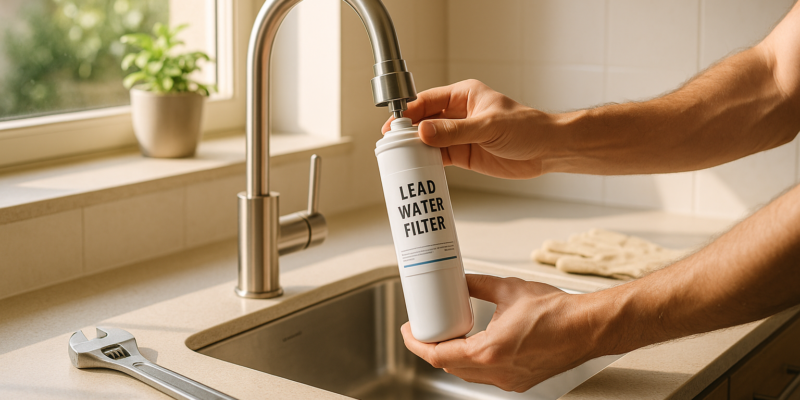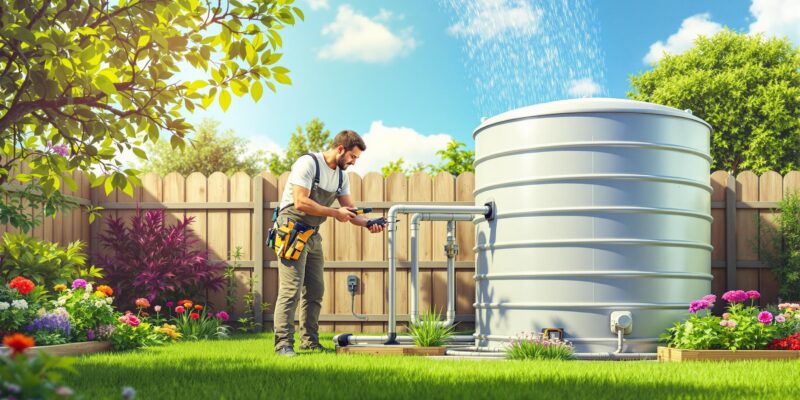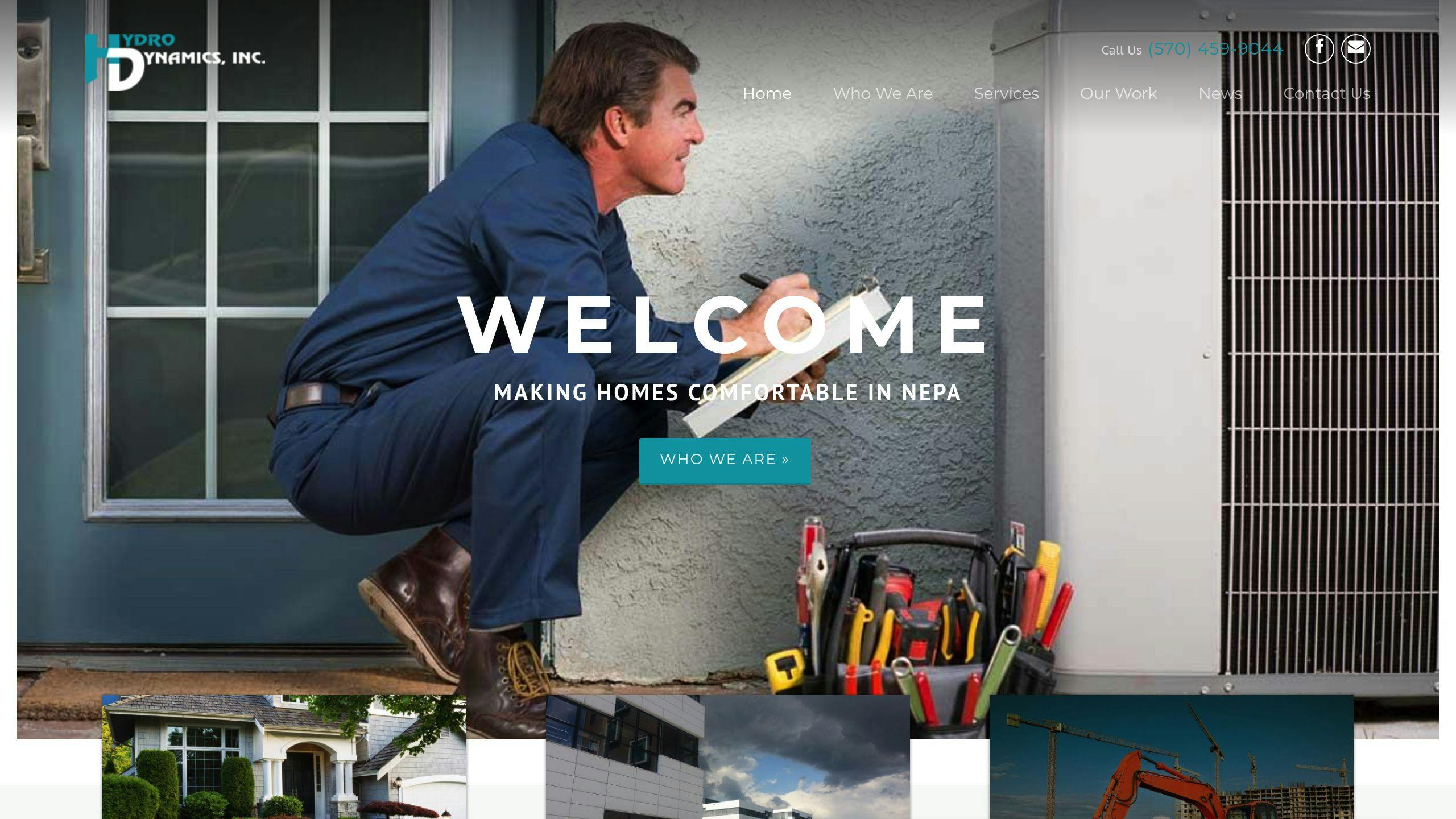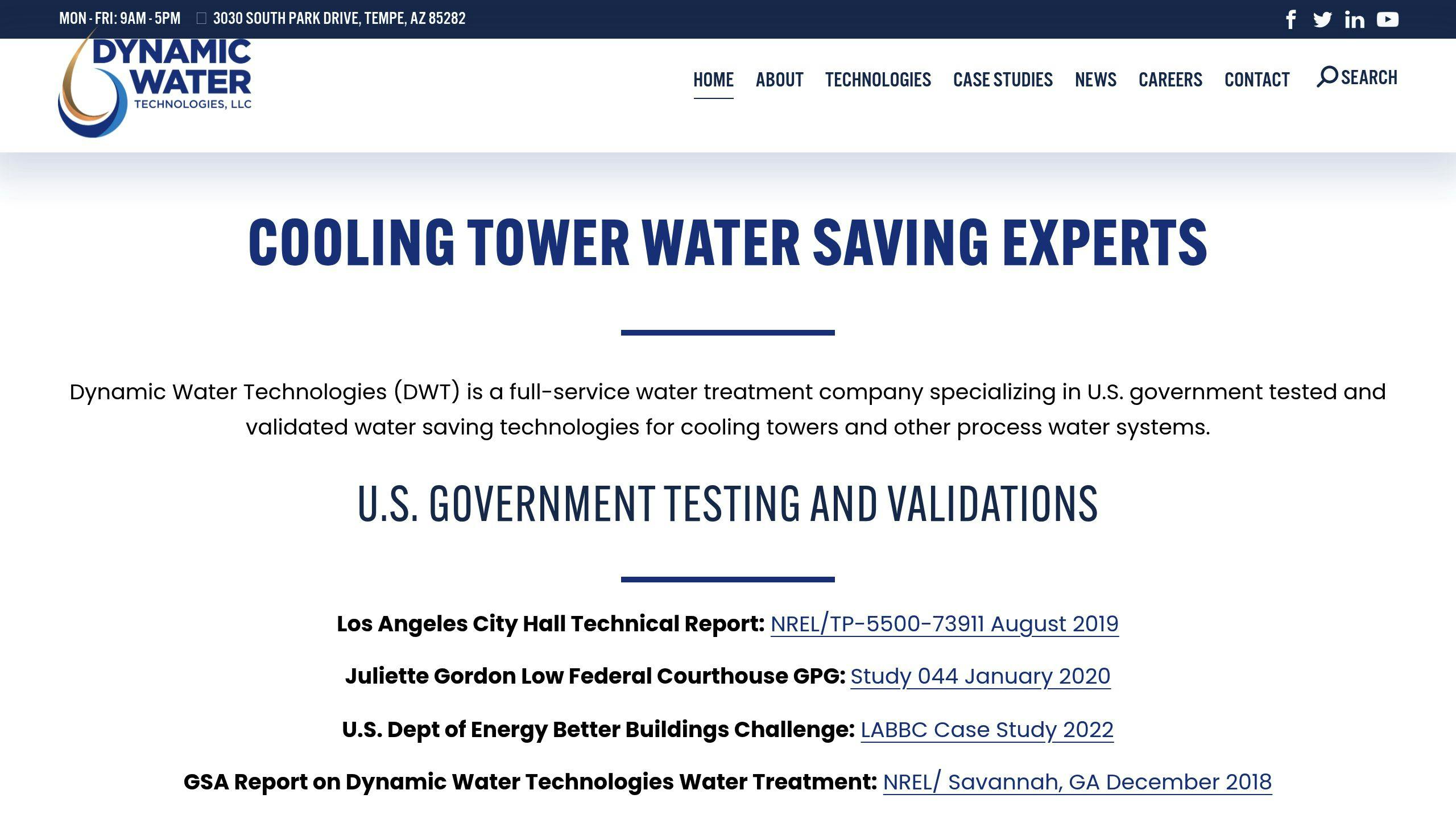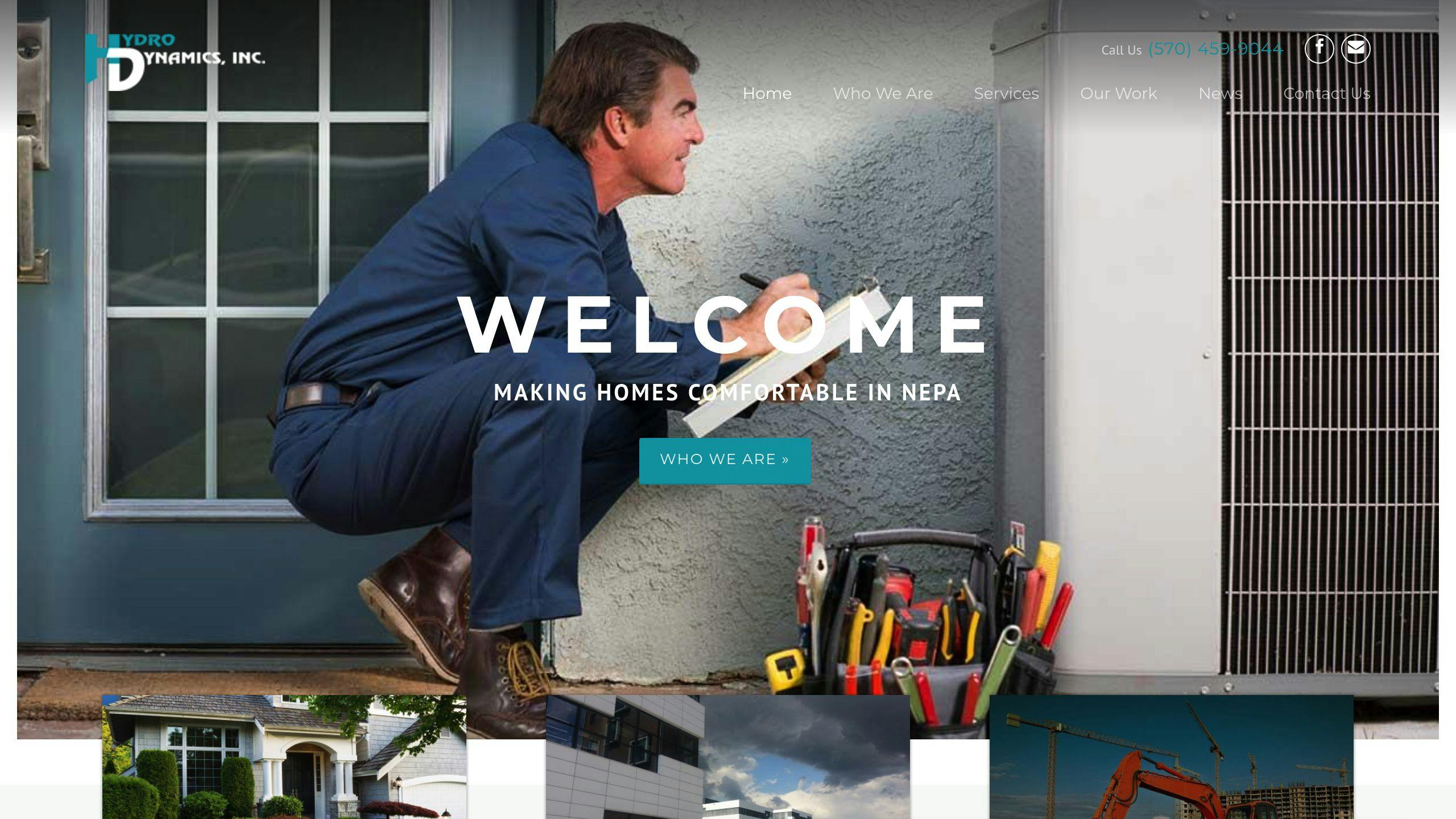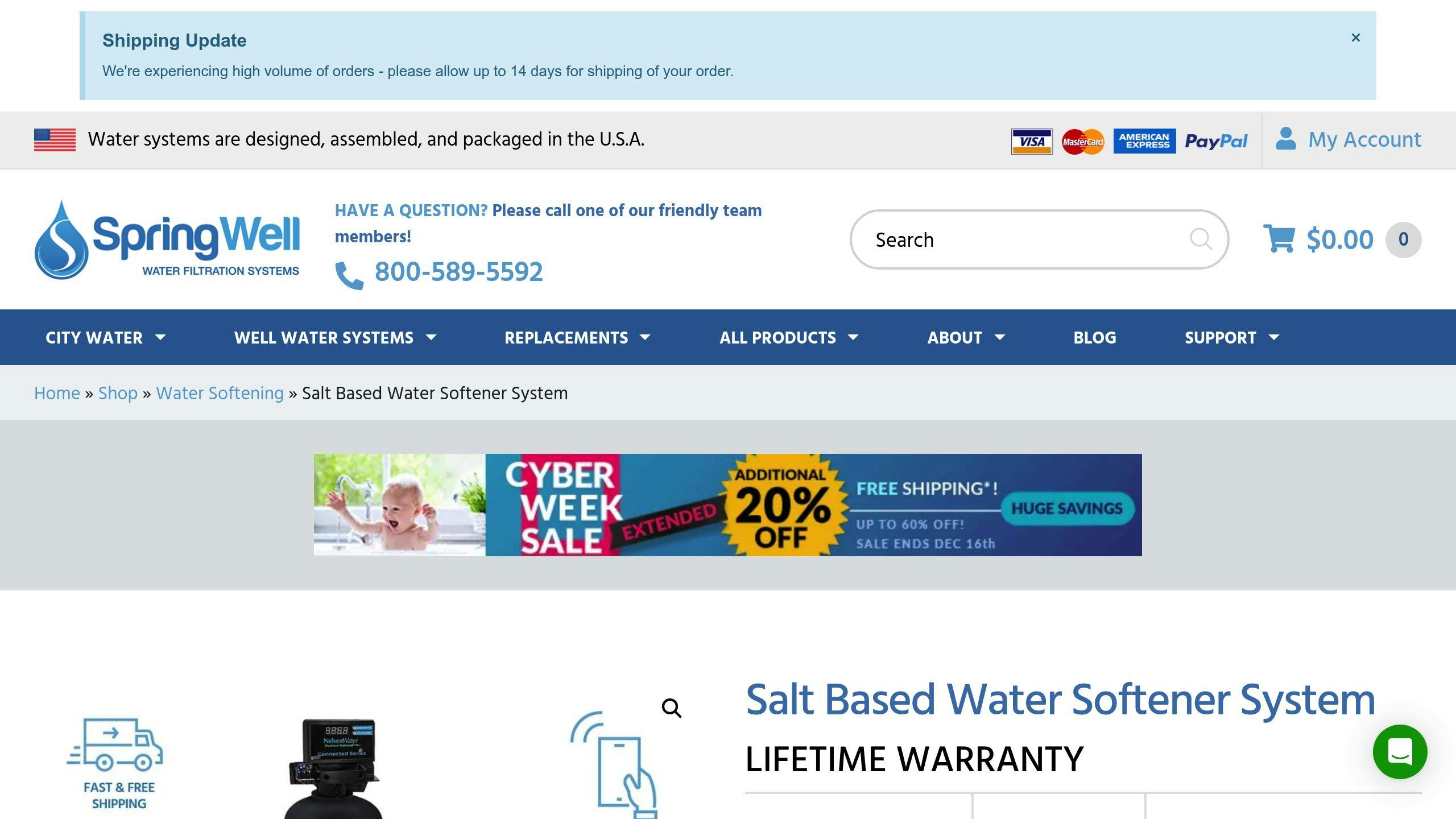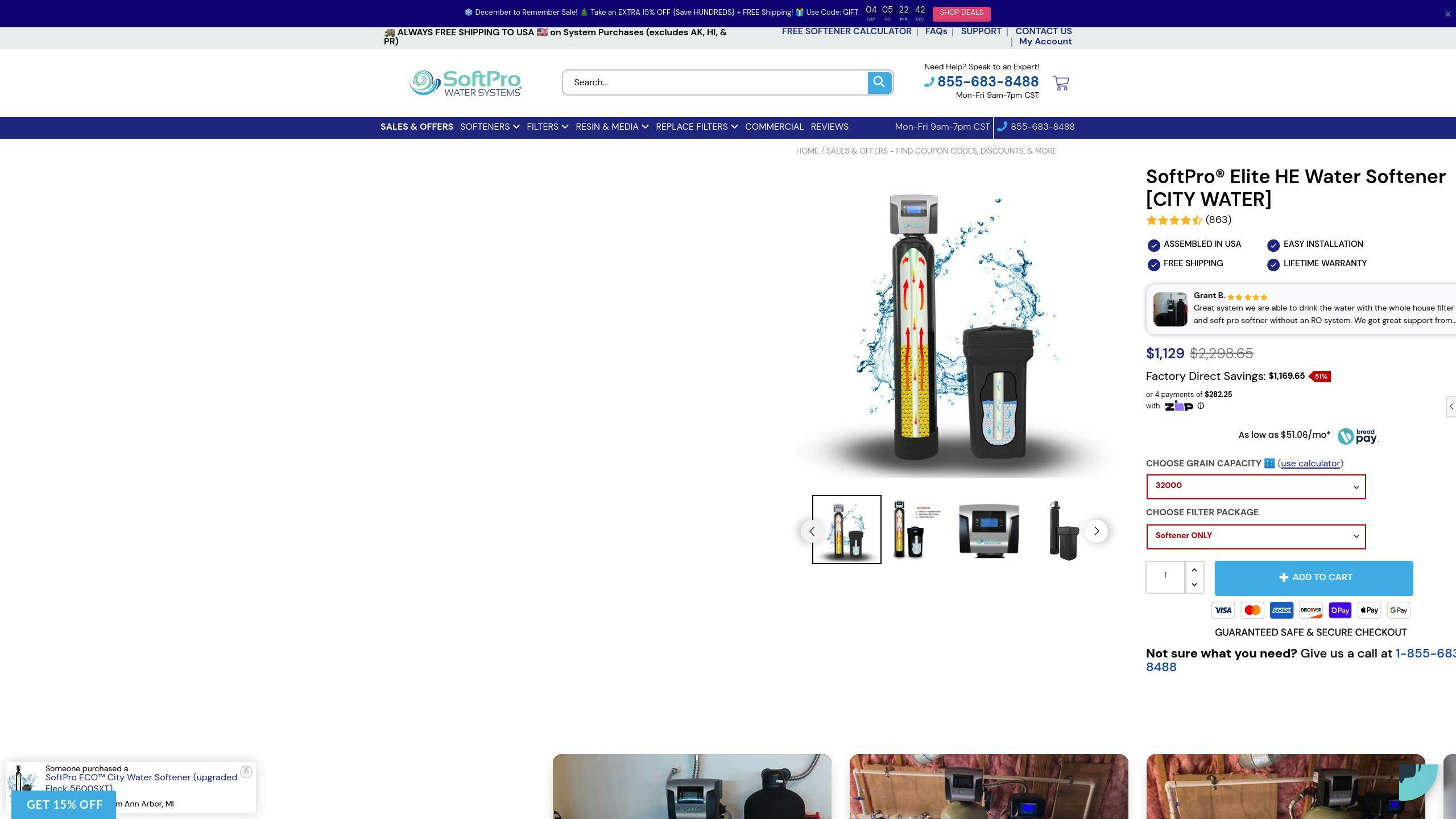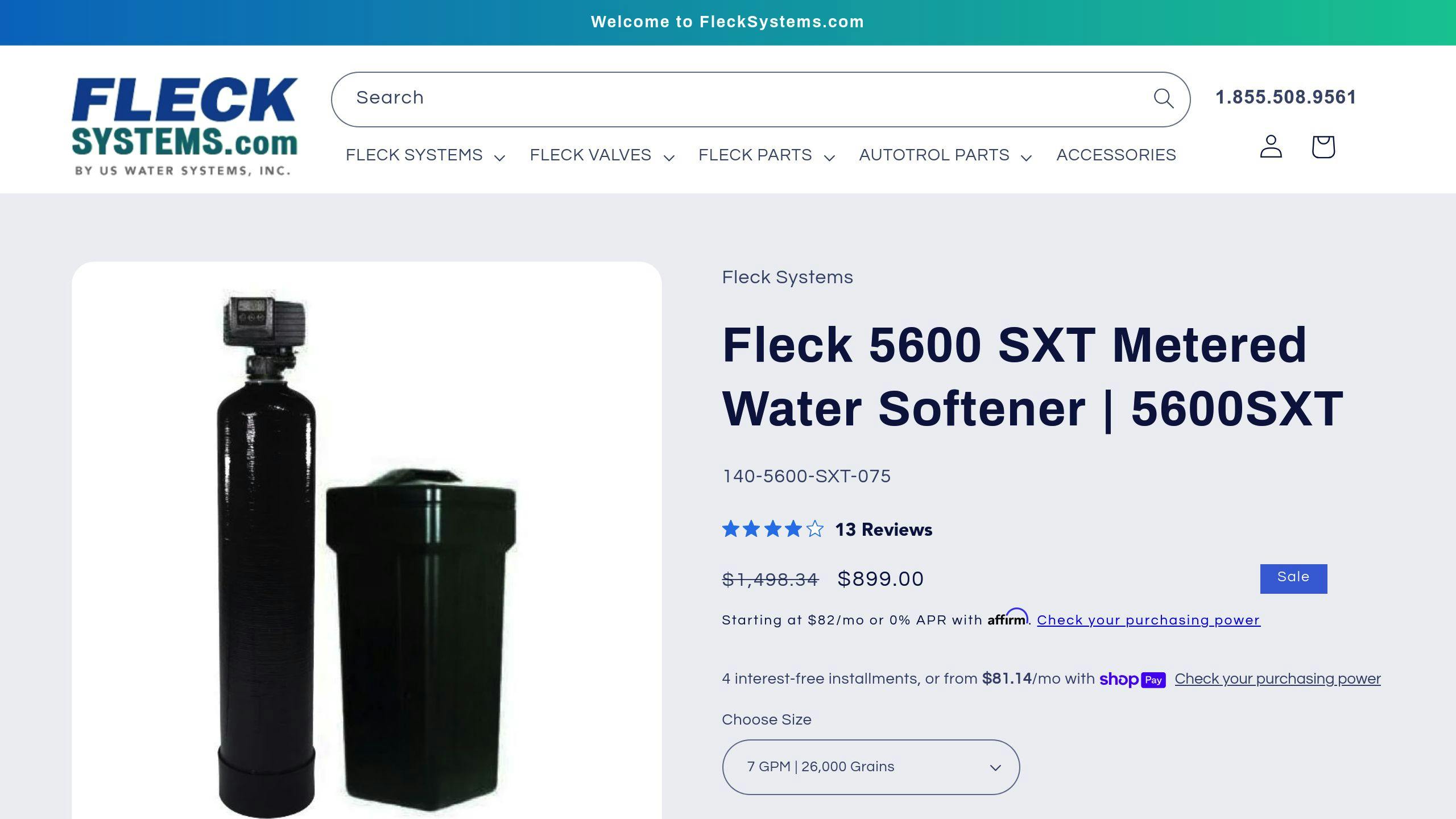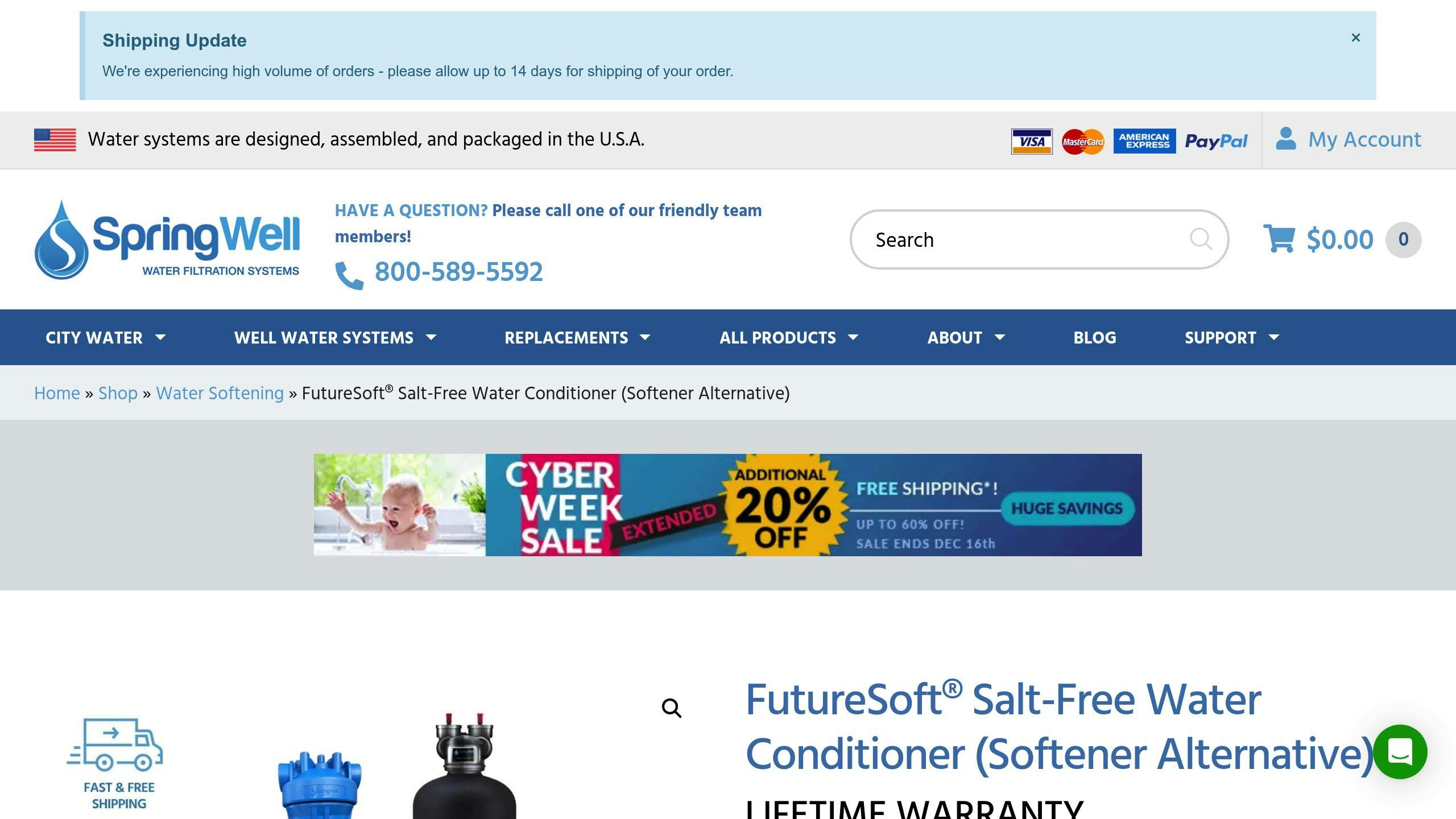Electric Boilers vs Gas Boilers: Key Differences
Electric and gas boilers serve different needs, and choosing the right one depends on efficiency, cost, safety, and environmental goals. Here’s a quick breakdown:
- Efficiency: Electric boilers convert nearly 100% of electricity into heat, while modern gas boilers achieve 90–95% efficiency.
- Costs: Electric boilers cost less to install ($6,469–$11,885) but have higher annual operating costs (~$1,700). Gas boilers are more affordable to run ($620–$1,260 annually) but require more maintenance.
- Lifespan: Electric boilers last longer (15–25 years) compared to gas boilers (10–15 years).
- Environmental Impact: Electric boilers produce no direct emissions, especially when powered by renewables, while gas boilers emit 0.215 kg of CO₂ per kWh.
- Safety: Electric boilers eliminate risks like gas leaks and carbon monoxide, making them safer for facilities.
Quick Comparison
| Feature | Electric Boilers | Gas Boilers |
|---|---|---|
| Efficiency | 99–100% (point-of-use) | 90–95% (modern systems) |
| Installation Cost | $6,469–$11,885 | $7,469–$14,885 |
| Annual Operating Cost | ~$1,700 | $620–$1,260 |
| Lifespan | 15–25 years | 10–15 years |
| Emissions | Zero (with renewables) | 0.215 kg CO₂/kWh |
| Safety | No combustion risks | Requires ventilation, risk of leaks |
Electric boilers are ideal for precise heating and low-emission goals, while gas boilers excel in high-demand, cost-efficient operations. Choose based on your facility’s needs.
Industrial Boilers: Should You Go Electric or Gas-Fired?
How Electric and Gas Boilers Work
Electric and gas boilers generate heat in distinct ways, and these differences significantly influence their role in industrial applications. Below, we break down how each type operates.
Electric Boilers: Heating with Electrical Resistance
Electric boilers work by converting electricity directly into heat. Inside the system, resistance elements submerged in water heat it to produce steam or hot water for industrial use [5]. This process is highly efficient, with nearly 100% of the electrical energy converted into heat [8]. Because there’s no combustion involved, electric boilers don’t need flues or chimneys to vent exhaust gases. This not only simplifies installation but also eliminates safety risks tied to fuel storage and handling [5].
Gas Boilers: Heat from Combustion
Gas boilers operate by burning natural gas or propane. A burner mixes the gas with air and ignites it within a combustion chamber [6][7]. The resulting flame generates intense heat, which heats water to produce steam or hot water [5][7]. Key components include the burner, combustion chamber, heat exchanger, and a flue system that safely vents by-products like water vapor and carbon monoxide [6][9]. While modern gas boilers are quite efficient – typically achieving 90% to 95% efficiency – some energy is lost during combustion [5]. Unlike electric boilers, gas boilers require proper ventilation and adherence to strict safety standards due to the emissions and risks associated with fuel storage and combustion.
Efficiency Comparison: Electric vs Gas Boilers
When comparing boiler efficiency for industrial use, it’s essential to consider both the point-of-use efficiency and the broader system losses. While point-of-use numbers can look impressive, they don’t tell the whole story. Let’s break down these efficiencies and what they mean for overall performance.
Energy Conversion Efficiency
Electric boilers are highly efficient at converting energy into heat, with an impressive 99% efficiency rate. This is because they bypass the energy losses that occur during combustion [14].
Gas boilers, on the other hand, are efficient by combustion standards, with point-of-use efficiencies typically ranging from 90% to 95% [1]. However, they lose around 5% to 10% of energy through flue gases [1]. Modern condensing gas boilers can push efficiencies above 95% by capturing and using some of the heat that would otherwise escape [11].
The efficiency gap widens when you look at older systems. While modern electric boilers maintain their high efficiency over time, older gas boilers – those in operation for 25 years or more – can drop to around 60% efficiency [12]. These older systems often experience energy losses between 20% and 35%, making them prime candidates for replacement [11].
| Boiler Type | Point-of-Use Efficiency | Overall System Efficiency |
|---|---|---|
| Electric | 99–100% | 30–45% |
| Gas (Modern) | 90–95% | 80–90% |
| Gas (Older) | 60–80% | 50–70% |
System Energy Losses
System-wide efficiency paints a more complete picture, and this is where the differences between electric and gas boilers become clearer.
Electricity transmission comes with its own set of losses. As power travels from generation plants to industrial sites, transmission losses range from 7% to 12% [13]. Additionally, many fossil fuel power plants operate at only 30% to 50% efficiency when generating electricity [1]. These factors significantly impact the overall efficiency of electric boilers.
Gas delivery systems, however, are much more efficient. Natural gas pipelines lose only about 1% to 2% of energy during delivery [13], and the gas retains 90% to 95% of its efficiency when it reaches industrial facilities [1]. This delivery advantage helps gas boilers achieve better overall system efficiency compared to electric boilers, despite lower point-of-use efficiency.
Boilers also experience energy losses due to stack, radiation, and convection, which can account for 10% to 20% of energy loss [10]. Electric boilers avoid flue losses entirely since they don’t rely on combustion or chimneys [13]. Gas boilers, however, inherently lose energy during combustion and through the flue system [13]. That said, modern condensing gas boilers can recover some of this lost energy when exhaust temperatures fall below 176°F, achieving thermal efficiencies above 95% [15].
For applications requiring precise heating or in space-constrained environments, the 99% efficiency of electric boilers can outweigh grid-related losses. On the flip side, for high-demand, continuous operations, the superior overall system efficiency of gas boilers often makes them the more cost-effective option.
Cost Analysis: Installation, Operation, and Maintenance
When evaluating the total cost of ownership for boilers, you need to factor in installation, operation, and maintenance. Each type of boiler – electric or gas – affects long-term costs differently.
Installation Costs and Requirements
Electric boilers are generally simpler and less expensive to install than gas boilers. The cost of installing an electric boiler typically falls between $6,469 and $11,885, covering both labor and materials [16]. On the other hand, gas boiler installations often require additional work, such as installing flues, exhaust lines, drains, and fuel lines, which can add $1,000 to $3,000 to the overall cost [17]. Gas systems may also involve permits, coordination with utility companies, and safety inspections, which can extend the timeline and increase expenses.
Once the installation is complete, the next major cost consideration is the system’s day-to-day operation.
Operating Costs
The ongoing operational costs of electric and gas boilers differ significantly. Based on current U.S. energy rates – $0.2703 per kWh for electricity and $0.0699 per kWh for natural gas – gas boilers are more economical for continuous, high-demand operations. Natural gas is about three times cheaper than electricity per unit of energy [2]. While fuel costs are the primary factor, differences in system efficiency and infrastructure requirements also play a role in determining the overall operating expenses.
Beyond daily operation, maintenance expenses further distinguish these systems.
Maintenance Requirements
Maintenance needs are another key factor separating electric and gas boilers. According to the U.S. Energy Information Administration, the average annual maintenance cost for a natural gas boiler is about 16.2 times higher than that of an electric boiler [4]. Electric boilers, with their simpler designs and lack of combustion processes, require minimal upkeep. Maintenance for electric systems often involves only occasional replacement of heating elements, leading to costs that are up to 50% lower than those for fuel-fired systems [18].
Gas boilers, however, demand more extensive maintenance. Tasks include refractory repairs to address damage from high-temperature combustion, periodic non-destructive testing, burner cleaning and calibration, and regular inspection and maintenance of exhaust systems to ensure proper ventilation. These requirements contribute to higher long-term maintenance costs.
Industrial Applications: Choosing the Right Boiler
When it comes to selecting the right boiler for industrial use, the decision largely depends on aligning the system’s capabilities with the specific demands of your operation. Whether you opt for an electric or gas boiler will often hinge on factors like heating requirements, available space, and the need for temperature precision. Each type has its strengths, making it better suited to certain environments.
High-Demand Industrial Settings
For industries requiring substantial thermal output, gas boilers are often the go-to choice. Their ability to generate large amounts of heat almost instantly through combustion makes them ideal for manufacturing plants, foundries, and large-scale processing facilities. Unlike gas boilers, electric systems heat up more gradually and require a significant electrical supply to achieve similar output levels [3][19]. This makes gas boilers a more cost-effective option for operations that need continuous, high-output heating. However, when precise temperature control is a priority, electric boilers may be the better option.
Precision-Controlled Environments
Electric boilers shine in industries where maintaining exact temperatures is critical. Sectors like pharmaceutical manufacturing, healthcare, and laboratory research benefit from their ability to deliver nearly 99% efficiency by converting almost all electrical energy into heat [5]. Additionally, when powered by renewable energy sources, electric boilers can operate with minimal environmental impact [5]. Their precision and efficiency make them indispensable in applications where even minor temperature fluctuations cannot be tolerated.
Space-Limited Applications
In settings where space is limited, electric boilers offer a distinct advantage. Their compact design eliminates the need for bulky flues, ventilation systems, or extensive gas supply connections [3][20]. This makes them particularly well-suited for urban facilities, retrofitted buildings, or any location where maximizing floor space is crucial. On the other hand, gas boilers require additional infrastructure like ventilation systems and flues, which can significantly increase the overall footprint of the installation [3]. For facilities where space is at a premium, electric boilers provide a practical and space-efficient solution.
Safety and Environmental Impact
When choosing an industrial boiler, it’s essential to weigh both safety profiles and environmental impacts. Each system comes with unique risks and environmental considerations that can shape your operation’s safety measures and sustainability objectives.
Carbon Emissions and Renewable Energy
The environmental footprint of a boiler largely hinges on its energy source. Gas boilers release approximately 0.215 kg of CO₂ per kWh, while grid-powered electricity produces about 0.519 kg of CO₂ per kWh[1]. At first glance, electric boilers might seem to have a higher carbon footprint when relying on traditional grid electricity. However, when paired with renewable energy sources like solar or wind, electric boilers can achieve zero emissions, offering a completely carbon-neutral solution[22]. For instance, an all-electric boiler system has the potential to reduce emissions by about 708 tons of CO₂ annually and up to 17,700 tons over its operational lifetime[4].
Beyond emissions, the safety aspects of these systems are another critical factor to consider.
Safety Risks
The safety risks associated with gas and electric boilers differ significantly. Gas boilers, for instance, pose combustion-related dangers, including the risk of carbon monoxide (CO) poisoning. According to HSE statistics, unsafe gas appliances cause around seven fatalities annually in the UK due to CO poisoning[19]. Since carbon monoxide is both odorless and colorless, consistent monitoring is crucial to ensure safety[1].
Electric boilers, on the other hand, eliminate combustion risks entirely. Their simpler design minimizes the need for frequent safety inspections compared to gas systems. Robert Presser, Vice President of Acme Engineering Products, highlights the safety advantages of electric boilers:
“With gas burning boilers, any gas leak can increase the risk of an explosion wherever there are fuel lines, fumes, flames, or storage tanks. With electrode boilers, there are no combustion hazards because there are no flames, fumes, fuel lines, or storage tanks. Electric boilers – and specifically the electrode units – are inherently the safest boiler design today. These units do not need an operator because if anything goes wrong, a breaker trip automatically halts operations, preventing escalation.” [21]
Gas boilers demand regular servicing to detect leaks and ensure proper combustion. In contrast, electric boilers generally require less maintenance, making them an appealing option for facilities prioritizing worker safety and environmental responsibility. These distinctions are crucial when selecting a boiler system, as they tie directly into operational efficiency, regulatory compliance, and emerging technology trends, which will be addressed in the next section.
Regulations and Future Trends
Regulatory shifts and energy policies are becoming key factors in determining boiler choices for industrial facilities. These changes emphasize the operational and environmental considerations discussed earlier, influencing the decision between electric and gas boilers.
Emissions Regulations
Gas boilers are under growing scrutiny due to stricter emissions standards across the U.S. Industrial boilers contribute up to 10% of industrial carbon emissions and 6% of industrial NOx pollution[24]. Alarmingly, 66% of the highest-emitting boilers are located in federally designated disadvantaged communities, where NOx levels are nearly double the national average[25].
Under the Clean Air Act, states have the authority to impose emissions limits on industrial boilers, often exceeding federal requirements[24]. A groundbreaking example is the South Coast Air Quality Management District’s (SCAQMD) Rule 1146.2, passed in June 2024. This rule mandates the electrification of industrial boilers and water heaters, aiming to cut NOx pollution by 5.6 tons daily once fully implemented[23].
In this regulatory landscape, electric boilers stand out as a cleaner alternative. Unlike gas boilers, they emit no pollutants such as carbon monoxide or nitrogen oxides during operation[26]. As emissions standards continue to tighten, electric systems are gaining increased governmental support.
Government Incentives for Electric Systems
Federal and state programs are actively promoting the adoption of electric boilers by offering financial incentives to offset their higher upfront costs compared to gas systems[28]. These incentives come in various forms, including tax credits, rebates, and low-interest loans, making the transition to electric systems more accessible.
The Clean Energy Rule, for instance, pushes federal agencies to minimize on-site fossil fuel use in new and significantly renovated facilities[29]. Some utilities are even offering reduced industrial electricity rates, further improving the return on investment for electric boilers[28]. Depending on factors like energy rates, usage, and available incentives, the payback period for these systems can range from 2 to 7 years[28].
Trevor Dolan, senior policy lead at Evergreen Action, highlights the transformative potential of these policies:
“By stepping in with supportive policies, states can correct market failures, drive meaningful emissions reductions, and help manufacturers modernize for a more competitive, low-carbon future – while protecting the communities that have long borne the brunt of industrial pollution.”[25]
These incentives, alongside advancements in technology, are setting the stage for electric boilers to seamlessly integrate with smart grids.
Smart Grid Integration
One of the standout features of electric boilers is their ability to integrate with smart grids. This capability allows them to participate in demand-response programs and adjust operations automatically based on grid conditions. Facilities can reduce energy costs by running boilers during off-peak hours when electricity rates are lower. Smart thermostats and control systems further enhance efficiency and monitoring of electric heating systems[31].
The global commercial electric boiler market is projected to grow at a CAGR of 15.5% between 2024 and 2032, with smart grid integration playing a significant role in this expansion[28]. The Renewable Thermal Collaborative’s Electrification Action Plan outlines ambitious goals for reducing industrial thermal emissions:
“Electrification Action Plan lays out an ambitious, multi-year strategy to address barriers to electrification. It provides a vision for the priority market, policy, and community actions that will drive the RTC towards its goal of a 30% reduction in U.S. industrial thermal emissions by 2030 and full sector decarbonization by 2050.”[27]
Industrial facilities are encouraged to explore local incentives and include them in their cost analyses when considering new equipment purchases[30]. As Kim Orbe from the Sierra Club points out:
“Despite gas industry claims, non-polluting electric equipment is already here and has far more momentum than its gas-powered rivals.”[23]
With regulatory and technological trends favoring electric systems, they are becoming an increasingly appealing choice for forward-thinking industrial operations.
Conclusion: Making the Right Choice
When it comes to selecting the right boiler, factors like efficiency, cost, safety, and compliance with regulations play a major role. The best choice ultimately depends on your facility’s specific needs, the regulatory landscape, and your long-term operational objectives. Each boiler type has its own strengths, tailored to different industrial requirements.
Electric boilers are ideal for settings where precision is key, offering nearly 100% energy conversion and precise temperature control. They also eliminate combustion-related risks and produce zero direct emissions, making them an appealing option as environmental regulations become stricter. On the other hand, gas boilers deliver powerful, rapid heating for high-demand operations. While their efficiency is slightly lower, the lower cost of natural gas often makes them more economical. However, it’s worth noting that, according to the U.S. Energy Information Administration, maintaining a natural gas boiler can cost about 16.2 times more annually than maintaining an electric system[4].
Regulations are also reshaping boiler preferences across industries. While electricity costs are about 2.4 times higher than natural gas in areas like Baltimore (based on 2024 utility rates), government incentives and smart grid technologies can help mitigate these higher expenses.
Given the complexities, a professional assessment is crucial. Every industrial facility has distinct heating requirements, space limitations, and operational goals. Hydrodynamics Inc., with over 30 years of experience, provides in-depth evaluations of energy usage, compliance needs, and long-term costs, helping facilities make informed decisions.
The right boiler choice comes down to aligning your operational needs, infrastructure, and financial priorities with expert guidance to ensure optimal results.
FAQs
What are the long-term costs of using an electric boiler instead of a gas boiler in industrial settings?
Electric Boiler vs. Gas Boiler: Weighing the Costs
Deciding between an electric boiler and a gas boiler for industrial applications means considering several long-term cost factors. While electric boilers typically come with a higher upfront price – about 12% more than gas boilers – they boast efficiency levels of up to 99%, significantly outperforming the 80–90% efficiency range of most gas boilers. They also require less maintenance, which can help cut down on ongoing service expenses.
That said, electricity tends to be more expensive than natural gas, which could lead to higher operating costs, especially for industries with substantial heating demands. Ultimately, the cost-effectiveness of either option hinges on local energy prices and the specific heating requirements of your facility. For businesses that prioritize energy efficiency and lower maintenance needs, electric boilers might still be the better investment, even with the higher energy costs.
What role do government incentives and smart grid technology play in choosing electric boilers over gas boilers?
Government Incentives and Efficiency of Electric Boilers
Government programs can make switching to electric boilers easier on your wallet. In the U.S., federal tax credits for energy-efficient home upgrades can help offset installation costs. For instance, homeowners might be eligible for up to $3,200 annually in tax credits when they invest in qualifying improvements. Combine that with the fact that many electric boilers boast efficiency ratings of over 98%, and you’re looking at significant long-term energy savings – even in areas where electricity prices are higher than gas.
Another benefit lies in smart grid technology. These systems enable buildings to adjust their energy use in response to real-time grid demand. This feature can lower costs during peak times while also enhancing overall efficiency. Plus, electric boilers pair seamlessly with renewable energy sources, making them a forward-thinking choice for a cleaner, more sustainable energy future.
What safety factors should you consider when choosing between electric and gas boilers for industrial use?
Safety Considerations: Electric vs. Gas Boilers in Industrial Settings
When choosing between electric and gas boilers for industrial use, safety is a critical factor to evaluate.
Electric boilers are often considered safer because they don’t rely on combustion. This means there’s no risk of carbon monoxide poisoning, a serious concern with gas systems. Additionally, electric boilers have fewer mechanical components and don’t require a flue system, which minimizes the risks of fires or explosions.
Gas boilers, however, operate through combustion. While effective, this process can release harmful gases or even lead to explosions if the system isn’t properly maintained. Regular inspections and diligent upkeep are absolutely necessary to ensure the safe operation of gas boilers.
In the end, the best choice depends on your specific industrial safety requirements. No matter which type you select, consistent maintenance is key to ensuring a safe and reliable operation.


